Hysteroscopic Adhesiolysis
Hysteroscopic Adhesiolysis in Asherman’s Syndrome: Restoring Uterine Health
Asherman’s Syndrome is a rare but significant condition that can severely impact women’s reproductive health. Characterized by the presence of intrauterine adhesions (scar tissue) within the uterine cavity, this condition often leads to symptoms such as menstrual abnormalities, infertility, and recurrent pregnancy loss. Fortunately, advancements in gynecological procedures, particularly hysteroscopic adhesiolysis, offer an effective treatment option to restore uterine functionality. This blog explores Asherman’s Syndrome, the hysteroscopic adhesiolysis procedure, and its benefits.
Understanding Asherman’s Syndrome
Asherman’s Syndrome occurs when scar tissue forms inside the uterus, often as a result of uterine trauma or infection. This scarring can partially or completely block the uterine cavity, disrupting normal menstrual function and causing reproductive challenges.
Causes of Asherman’s Syndrome
- Dilation and Curettage (D&C): Often performed after miscarriage or childbirth, D&C is a leading cause of uterine adhesions.
- Infections: Severe pelvic infections, including endometritis, can lead to scar tissue formation.
- Uterine Surgery: Procedures such as myomectomy or cesarean delivery increase the risk.
- Radiation Therapy: Treatment for pelvic cancers can damage the uterine lining, leading to scarring.
Symptoms of Asherman’s Syndrome
- Light or absent menstrual periods (hypomenorrhea or amenorrhea).
- Infertility or difficulty conceiving.
- Recurrent miscarriages.
- Cyclic pelvic pain (in cases of trapped menstrual blood).
Diagnosing Asherman’s Syndrome
Diagnosing the condition typically involves imaging studies such as hysterosalpingography (HSG) or saline infusion sonography. However, hysteroscopy remains the gold standard for confirming the presence and extent of intrauterine adhesions.
What is Hysteroscopic Adhesiolysis?
Hysteroscopic adhesiolysis is a minimally invasive surgical procedure designed to remove intrauterine adhesions and restore the uterine cavity to its normal shape and functionality. By utilizing a hysteroscope—a thin, lighted instrument—surgeons can directly visualize and treat the affected area with precision.
Indications for Hysteroscopic Adhesiolysis
The procedure is indicated for women experiencing:
- Infertility: To improve the chances of conception.
- Recurrent Pregnancy Loss: To address adhesions hindering successful implantation.
- Menstrual Irregularities: To restore normal menstrual cycles.
- Chronic Pelvic Pain: Caused by trapped blood or uterine scarring.
The Procedure: Step-by-Step
Hysteroscopic adhesiolysis is typically performed under general or regional anesthesia and involves the following steps:
- Preoperative Preparation: Patients undergo a thorough evaluation, including imaging and blood tests, to confirm the diagnosis and plan the procedure.
- Hysteroscope Insertion: The hysteroscope is carefully introduced through the cervix into the uterine cavity. Saline or gas is used to expand the cavity for optimal visualization.
- Adhesion Removal: Specialized instruments such as scissors, forceps, or electrosurgical devices are used to cut and remove the adhesions. Extreme care is taken to avoid damaging healthy uterine tissue.
- Completion and Postoperative Measures: The surgeon ensures that the uterine cavity is free of adhesions and may place a temporary intrauterine device (IUD) or catheter to prevent reformation of scar tissue. Hormonal therapy may also be prescribed to promote endometrial healing.
Benefits of Hysteroscopic Adhesiolysis
- Minimally Invasive: No external incisions, resulting in faster recovery and minimal discomfort.
- Precision: Direct visualization allows targeted removal of adhesions without affecting healthy tissue.
- Restored Uterine Function: Improved menstrual cycles and enhanced fertility.
- Short Recovery Time: Most patients resume normal activities within a few days to a week.
Postoperative Care and Recovery
After hysteroscopic adhesiolysis, patients may experience mild cramping, spotting, or watery discharge. Key aspects of postoperative care include:
- Follow-Up Hysteroscopy: To confirm successful removal of adhesions and assess uterine healing.
- Hormonal Therapy: Estrogen therapy may be prescribed to promote regrowth of the endometrial lining.
- Avoiding Sexual Activity: For 1-2 weeks to prevent infection.
Success Rates and Outcomes
The success of hysteroscopic adhesiolysis depends on the severity of adhesions. Mild to moderate cases typically have excellent outcomes, with restored menstrual cycles and significantly improved fertility rates. However, severe adhesions may require multiple procedures or additional treatments.
Potential Risks and Complications
While hysteroscopic adhesiolysis is generally safe, possible risks include:
- Uterine Perforation: Rare but serious, requiring immediate attention.
- Infection: Managed with antibiotics.
- Recurrence of Adhesions: Prevented with postoperative measures such as IUD placement or hormonal therapy.
Living with Asherman’s Syndrome: When to Seek Help
Women experiencing symptoms like missed periods, recurrent pregnancy loss, or unexplained infertility should consult a gynecologist. Early diagnosis and treatment of Asherman’s Syndrome can significantly improve reproductive outcomes and quality of life.
Conclusion
Hysteroscopic adhesiolysis has revolutionized the treatment of Asherman’s Syndrome, offering hope to women facing infertility and other challenges caused by intrauterine adhesions. With its minimally invasive nature, high success rates, and ability to restore normal uterine function, it remains the cornerstone of care for this condition. If you suspect you have Asherman’s Syndrome or have been advised to undergo hysteroscopic adhesiolysis, consult a qualified gynecologist to understand how this procedure can transform your reproductive health and overall well-being.

